Andromeda [x]
![Andromeda [x]](https://64.media.tumblr.com/aa70ce40e59ba0f9da6e334afac731fe/tumblr_ox11noOQXn1tuy5mao1_500.jpg)
Andromeda [x]
js
More Posts from Xyhor-astronomy and Others

The Space Shuttle Challenger at a foggy Cape Canaveral, 1984.
(NASA/Department of Defense)
Why Webb Needs to Chill
Our massive James Webb Space Telescope is currently being tested to make sure it can work perfectly at incredibly cold temperatures when it’s in deep space.
How cold is it getting and why? Here’s the whole scoop…
Webb is a giant infrared space telescope that we are currently building. It was designed to see things that other telescopes, even the amazing Hubble Space Telescope, can’t see.

Webb’s giant 6.5-meter diameter primary mirror is part of what gives it superior vision, and it’s coated in gold to optimize it for seeing infrared light.

Why do we want to see infrared light?
Lots of stuff in space emits infrared light, so being able to observe it gives us another tool for understanding the universe. For example, sometimes dust obscures the light from objects we want to study – but if we can see the heat they are emitting, we can still “see” the objects to study them.
It’s like if you were to stick your arm inside a garbage bag. You might not be able to see your arm with your eyes – but if you had an infrared camera, it could see the heat of your arm right through the cooler plastic bag.

Credit: NASA/IPAC
With a powerful infrared space telescope, we can see stars and planets forming inside clouds of dust and gas.

We can also see the very first stars and galaxies that formed in the early universe. These objects are so far away that…well, we haven’t actually been able to see them yet. Also, their light has been shifted from visible light to infrared because the universe is expanding, and as the distances between the galaxies stretch, the light from them also stretches towards redder wavelengths.
We call this phenomena “redshift.” This means that for us, these objects can be quite dim at visible wavelengths, but bright at infrared ones. With a powerful enough infrared telescope, we can see these never-before-seen objects.

We can also study the atmospheres of planets orbiting other stars. Many of the elements and molecules we want to study in planetary atmospheres have characteristic signatures in the infrared.

Because infrared light comes from objects that are warm, in order to detect the super faint heat signals of things that are really, really far away, the telescope itself has to be very cold. How cold does the telescope have to be? Webb’s operating temperature is under 50K (or -370F/-223 C). As a comparison, water freezes at 273K (or 32 F/0 C).
How do we keep the telescope that cold?
Because there is no atmosphere in space, as long as you can keep something out of the Sun, it will get very cold. So Webb, as a whole, doesn’t need freezers or coolers - instead it has a giant sunshield that keeps it in the shade. (We do have one instrument on Webb that does have a cryocooler because it needs to operate at 7K.)

Also, we have to be careful that no nearby bright things can shine into the telescope – Webb is so sensitive to faint infrared light, that bright light could essentially blind it. The sunshield is able to protect the telescope from the light and heat of the Earth and Moon, as well as the Sun.

Out at what we call the Second Lagrange point, where the telescope will orbit the Sun in line with the Earth, the sunshield is able to always block the light from bright objects like the Earth, Sun and Moon.

How do we make sure it all works in space?
By lots of testing on the ground before we launch it. Every piece of the telescope was designed to work at the cold temperatures it will operate at in space and was tested in simulated space conditions. The mirrors were tested at cryogenic temperatures after every phase of their manufacturing process.

The instruments went through multiple cryogenic tests at our Goddard Space Flight Center in Maryland.

Once the telescope (instruments and optics) was assembled, it even underwent a full end-to-end test in our Johnson Space Center’s giant cryogenic chamber, to ensure the whole system will work perfectly in space.

What’s next for Webb?
It will move to Northrop Grumman where it will be mated to the sunshield, as well as the spacecraft bus, which provides support functions like electrical power, attitude control, thermal control, communications, data handling and propulsion to the spacecraft.

Learn more about the James Webb Space Telescope HERE, or follow the mission on Facebook, Twitter and Instagram.
Make sure to follow us on Tumblr for your regular dose of space: http://nasa.tumblr.com.
The dusty, star-forming galaxy took shape in the first billion years after the Big Bang and is likely to be one of the first galaxies to ever form, says Min Yun, astrophysicist of the University of Massachusetts Amherst.
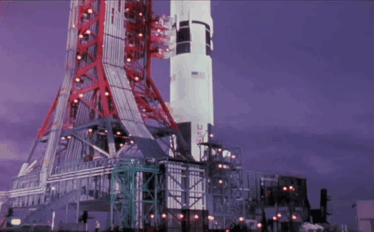
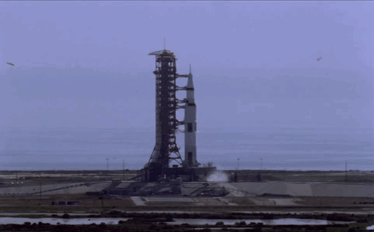
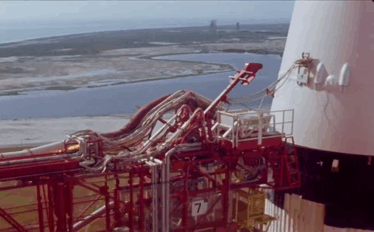
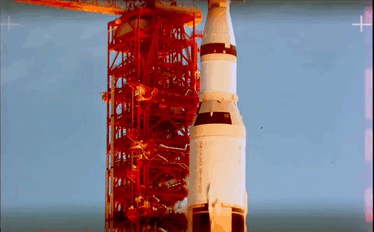
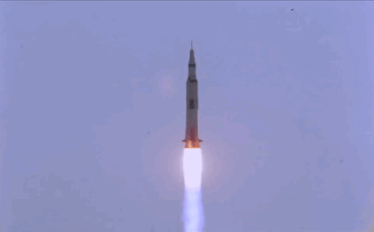
Apollo 11 Launch
evosia Chasing auroras is much like living life: if you show up, always be prepared for the amazing to happen.
Eight curiosities about black holes
In this post contains some facts and curiosities about one of the most extreme objects in the universe - Black Holes. Black holes are some of the strangest and most fascinating objects found in outer space. They are objects of extreme density, with such strong gravitational attraction that even light cannot escape from their grasp if it comes near enough.

1° A Massive Star Collapsing In Upon Itself
Say you have a star that’s about 20 times more massive than the Sun. Our Sun is going to end its life quietly; when its nuclear fuel burns out, it’ll slowly fade into a white dwarf. That’s not the case for far more massive stars. When those monsters run out of fuel, gravity will overwhelm the natural pressure the star maintains to keep its shape stable. When the pressure from nuclear reactions collapses, according to the Space Telescope Science Institute, gravity violently overwhelms and collapses the core and other layers are flung into space. This is called a supernova. The remaining core collapses into a singularity — a spot of infinite density and almost no volume. That’s another name for a black hole.

2° Black holes come in a range of sizes.
There are at least three types of black holes, ranging from relative squeakers to those that dominate a galaxy’s center. Primordial black holes are the smallest kinds, and range in size from one atom’s size to a mountain’s mass. Stellar black holes, the most common type, are up to 20 times more massive than our own Sun and are likely sprinkled in the dozens within the Milky Way. And then there are the gargantuan ones in the centers of galaxies, called “supermassive black holes.” They’re each more than one million times more massive than the Sun. How these beasts formed is still being examined.

3° The first black hole wasn’t discovered until X-ray astronomy was used
Cygnus X-1 was first found during balloon flights in the 1960s, but wasn’t identified as a black hole for about another decade. According to NASA, the black hole is 10 times more massive to the Sun. Nearby is a blue supergiant star that is about 20 times more massive than the Sun, which is bleeding due to the black hole and creating X-ray emissions.

4° Black holes are only dangerous if you get too close
Like creatures behind a cage, it’s okay to observe a black hole if you stay away from its event horizon — think of it like the gravitational field of a planet. This zone is the point of no return, when you’re too close for any hope of rescue. But you can safely observe the black hole from outside of this arena. By extension, this means it’s likely impossible for a black hole to swallow up everything in the Universe (barring some sort of major revision to physics or understanding of our Cosmos, of course.)

5° We aren’t sure if wormholes exist
A popular science-fiction topic concerns what happens if somebody falls into a black hole. Some people believe these objects are a sort of wormhole to other parts of the Universe, making faster-than-light travel possible. But as this Smithsonian Magazine article points out, anything is possible since we still have a lot to figure out about physics. “Since we do not yet have a theory that reliably unifies general relativity with quantum mechanics, we do not know of the entire zoo of possible spacetime structures that could accommodate wormholes,” said Abi Loeb, who is with the Harvard-Smithsonian Center for Astrophysics.

6° Black holes will spaghettify you and everything else
If a person was able to survive long enough to describe falling into a black hole, he would at first experience weightless as he goes into free fall, but then feel intense “tidal” gravitational forces as he got closer to the center of the black hole. In other words, if his feet were closer to the centre than his head, then they would feel a stronger pull until he eventually is stretched and then ripped apart. As he falls in he may observe distorted images as the light bends around him and he will also still be able to see beyond the black hole as light continues to reach him from the outside.

7° Weird time stuff happens around black holes
This is best illustrated by one person (call them Unlucky) falling into a black hole while another person (call them Lucky) watches. From Lucky’s perspective, Unlucky’s time clock appears to be ticking slower and slower. This is in accordance with Einstein’s theory of general relativity, which (simply put) says that time is affected by how fast you go, when you’re at extreme speeds close to light. The black hole warps time and space so much that Unlucky’s time appears to be running slower. From Unlucky’s perspective, however, their clock is running normally and Lucky’s is running fast.

8° Massive Black Hole in The Center Of Milky Way
It is now thought that most galaxies are held together by supermassive black holes at their centers, which cluster hundreds of solar systems around them. In fact, 30,000 light years away at the centre of our own Milky Way galaxy is a black hole with 30 million times the mass of our own sun.
Source: space.com, universetoday.com, sciencealert.com & astronomytrek.com










Dunes, peaks and craters on Mars obtained by HiRISE (High Resolution Imaging Science Experiment), a camera on board the Mars Reconnaissance Orbiter.
Image credit: NASA/JPL/University of Arizona

Saturn photographed by the Cassini spacecraft in 2014
Image credit: NASA/JPL/Cassini; precessed by: Ian Regan
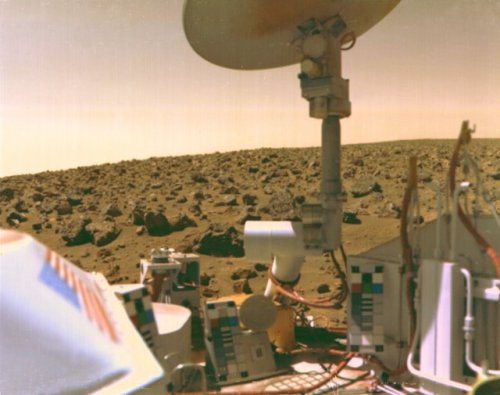
A boulder-strewn field of red rocks stretches across the horizon in this self-portrait of Viking 2 on Mars’ Utopian Plain. Viking 2 landed Sept. 3,1976, some 4,600 miles from the twin Viking 1 craft, which touched down on July 20.
Image Credit: NASA/JPL

-
 selfkaiharness liked this · 8 months ago
selfkaiharness liked this · 8 months ago -
 starshipsandhighseas reblogged this · 11 months ago
starshipsandhighseas reblogged this · 11 months ago -
 pastasilly liked this · 11 months ago
pastasilly liked this · 11 months ago -
 qualitymoonsuit reblogged this · 11 months ago
qualitymoonsuit reblogged this · 11 months ago -
 treasureplanetlove reblogged this · 11 months ago
treasureplanetlove reblogged this · 11 months ago -
 neph-le-geek reblogged this · 1 year ago
neph-le-geek reblogged this · 1 year ago -
 neph-le-geek reblogged this · 1 year ago
neph-le-geek reblogged this · 1 year ago -
 luminousbeingsarewe reblogged this · 1 year ago
luminousbeingsarewe reblogged this · 1 year ago -
 craftysciencetechnologyweasel liked this · 3 years ago
craftysciencetechnologyweasel liked this · 3 years ago -
 wakayume liked this · 3 years ago
wakayume liked this · 3 years ago -
 the-cosmic-wander reblogged this · 4 years ago
the-cosmic-wander reblogged this · 4 years ago -
 nolongerdaskilljoy liked this · 4 years ago
nolongerdaskilljoy liked this · 4 years ago -
 meditationrelaxationmusic reblogged this · 4 years ago
meditationrelaxationmusic reblogged this · 4 years ago -
 andromedapanda liked this · 4 years ago
andromedapanda liked this · 4 years ago -
 alexiiiis reblogged this · 5 years ago
alexiiiis reblogged this · 5 years ago -
 panwapolagkrinia liked this · 5 years ago
panwapolagkrinia liked this · 5 years ago -
 rodolfo9999 liked this · 5 years ago
rodolfo9999 liked this · 5 years ago -
 target7777777 reblogged this · 5 years ago
target7777777 reblogged this · 5 years ago -
 nagasa66rennayo77 reblogged this · 5 years ago
nagasa66rennayo77 reblogged this · 5 years ago -
 nagasa66rennayo77 liked this · 5 years ago
nagasa66rennayo77 liked this · 5 years ago -
 spookydisasteronmain liked this · 5 years ago
spookydisasteronmain liked this · 5 years ago -
 anidiotelhs reblogged this · 5 years ago
anidiotelhs reblogged this · 5 years ago -
 mystickiancy liked this · 5 years ago
mystickiancy liked this · 5 years ago -
 tse-me-fwtospa8o reblogged this · 5 years ago
tse-me-fwtospa8o reblogged this · 5 years ago -
 tse-me-fwtospa8o liked this · 5 years ago
tse-me-fwtospa8o liked this · 5 years ago -
 dellerino liked this · 5 years ago
dellerino liked this · 5 years ago -
 alchemistbrain reblogged this · 5 years ago
alchemistbrain reblogged this · 5 years ago -
 alchemistbrain liked this · 5 years ago
alchemistbrain liked this · 5 years ago -
 minsugafour reblogged this · 5 years ago
minsugafour reblogged this · 5 years ago -
 michigandrifter liked this · 5 years ago
michigandrifter liked this · 5 years ago -
 fanartofthelostcities liked this · 5 years ago
fanartofthelostcities liked this · 5 years ago -
 sparklycreampuff liked this · 5 years ago
sparklycreampuff liked this · 5 years ago -
 inquisitorstewie liked this · 5 years ago
inquisitorstewie liked this · 5 years ago -
 the-fae-folk liked this · 5 years ago
the-fae-folk liked this · 5 years ago -
 apologiesmilord reblogged this · 5 years ago
apologiesmilord reblogged this · 5 years ago -
 timtoms liked this · 5 years ago
timtoms liked this · 5 years ago -
 xstormchild liked this · 5 years ago
xstormchild liked this · 5 years ago -
 otherlandshark liked this · 5 years ago
otherlandshark liked this · 5 years ago -
 mysticalalpacawombat reblogged this · 5 years ago
mysticalalpacawombat reblogged this · 5 years ago -
 m-l-e-p liked this · 5 years ago
m-l-e-p liked this · 5 years ago -
 anxious-darkwolf liked this · 5 years ago
anxious-darkwolf liked this · 5 years ago -
 gia-is-a-punk-rocker liked this · 5 years ago
gia-is-a-punk-rocker liked this · 5 years ago -
 profoundtoadshepherdapricot-blog liked this · 5 years ago
profoundtoadshepherdapricot-blog liked this · 5 years ago -
 lifeofhancomic liked this · 5 years ago
lifeofhancomic liked this · 5 years ago -
 prepackagedlasagna liked this · 5 years ago
prepackagedlasagna liked this · 5 years ago -
 friendly-mimikyu reblogged this · 5 years ago
friendly-mimikyu reblogged this · 5 years ago -
 friendly-mimikyu liked this · 5 years ago
friendly-mimikyu liked this · 5 years ago
For more content, Click Here and experience this XYHor in its entirety!Space...the Final Frontier. Let's boldly go where few have gone before with XYHor: Space: Astronomy & Spacefaring: the collection of the latest finds and science behind exploring our solar system, how we'll get there and what we need to be prepared for!
128 posts